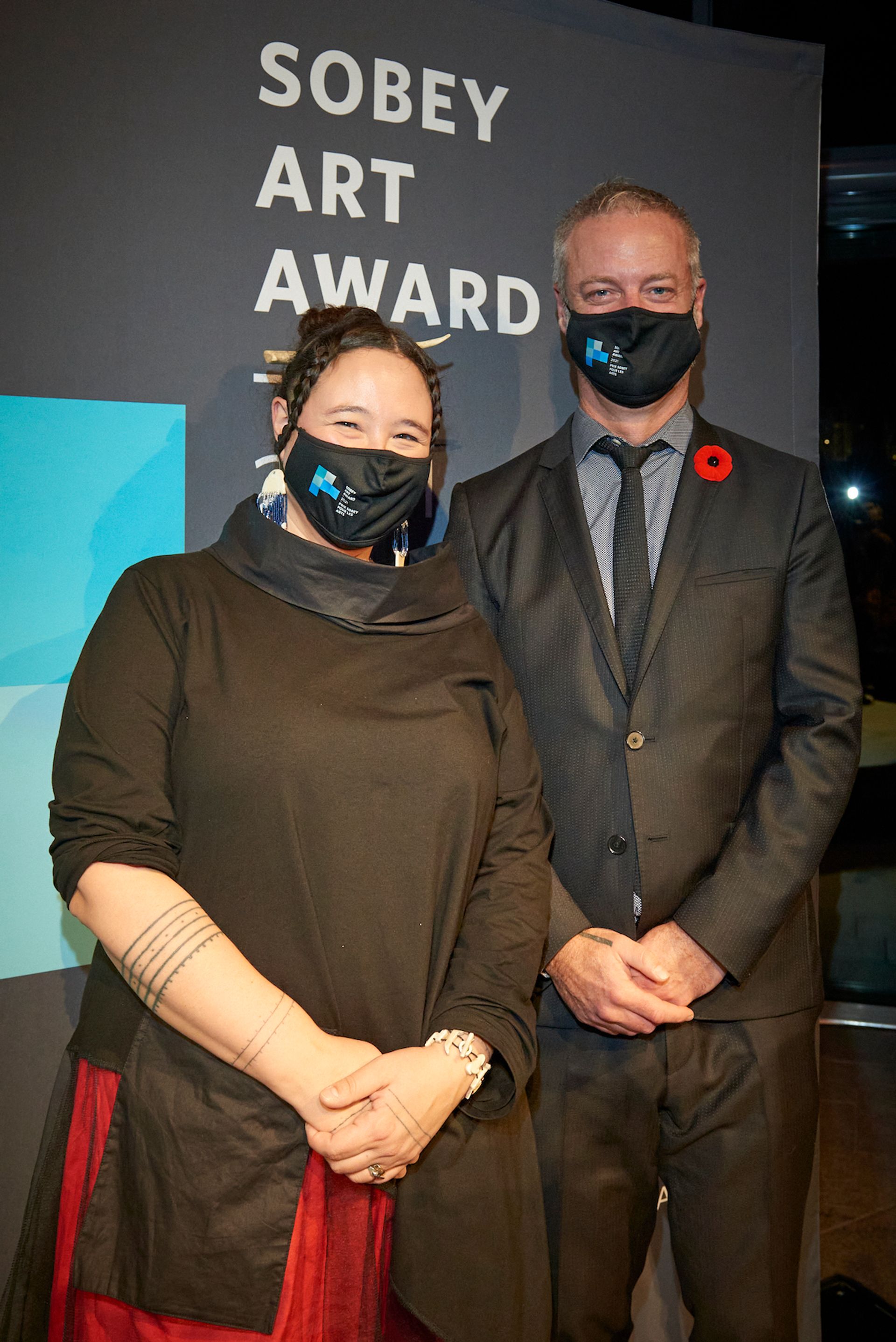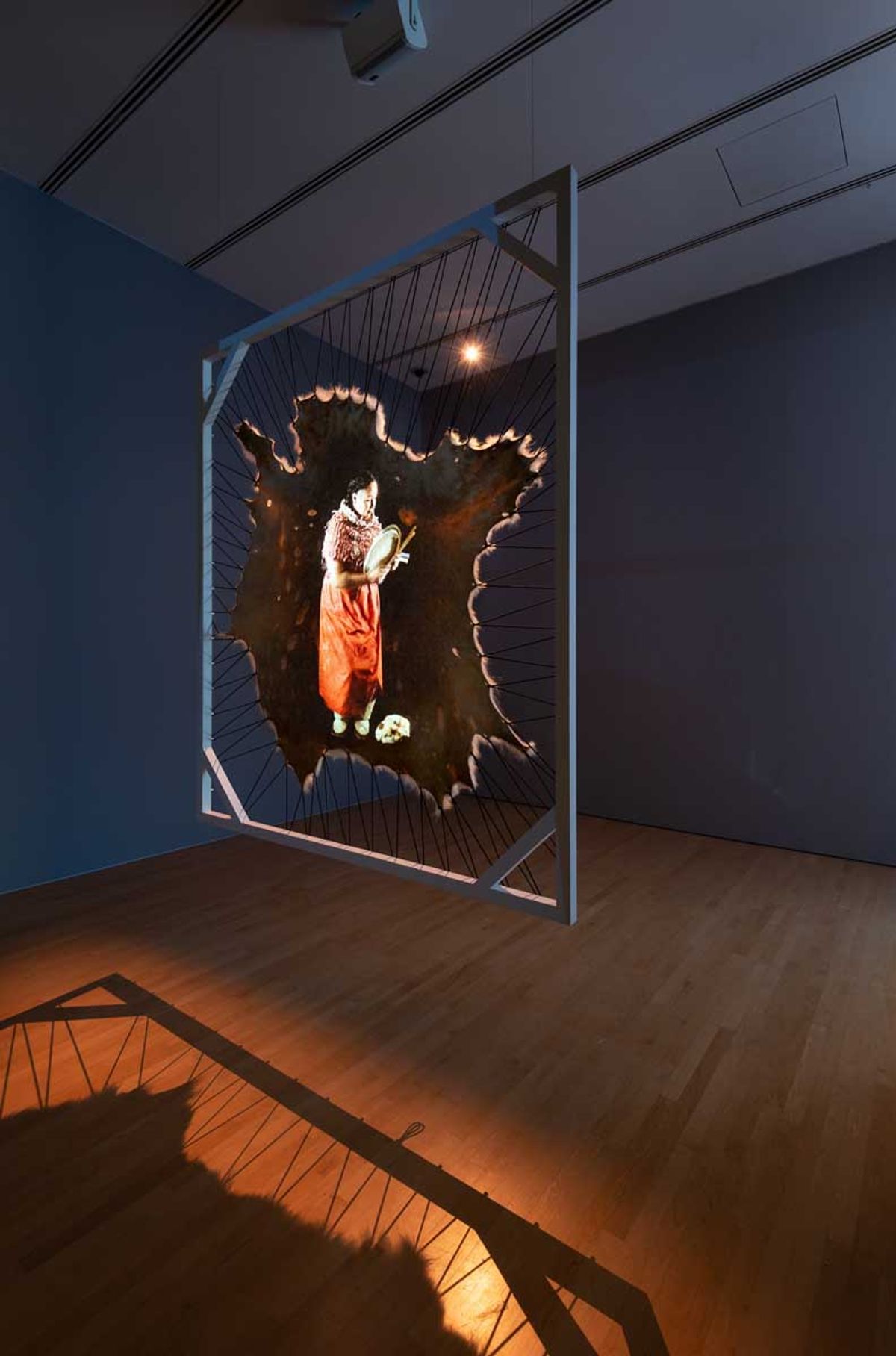When called to the stage of the National Gallery of Canada on Saturday night to receive the 2021 Sobey Art Award, which carries with it a prize of C$100,000 ($80,000), Greenlandic Inuk artist Laakkuluk Williamson Bathory could at first only laugh, which she did loud and long. Then the artist, who was representing Canada’s Prairies and northern regions, turned serious, reflecting on the fates of untold numbers of Indigenous children.
“I want you to remember the children, the thousands and thousands of Indigenous children,” said the 42-year-old mother of three. “We have to hold these children inside us.”
She has her own tale to tell, as she and her family survived a harrowing incident when the cabin they live in in Iqaluit, Nunavut’s capital and its only major city, was visited by a polar bear in the middle of the night. She sprang into action, shooting the bear, then the family set to work gutting it and removing the hide, undoubtedly an art world first. Was she afraid when she went almost nose to nose with the animal? “The fear doesn’t come until afterwards,” she explained.
The skin now serves as a backdrop to one of her works, the video installation Nannuppugut! (We killed a polar bear!) (2021), in which she appears in traditional garb drumming and dancing, celebrating “the bear’s spirit”. She is best known for her Greenlandic mask dance, which she describes as a political and cultural act as well as “an idiosyncratic art form”.

Laakkuluk Williamson Bathory (left), the 2021 Sobey Art Award winner, and Rob Sobey (right), chair of the Sobey Art Foundation. Photo by Lawrence Cook, courtesy the National Gallery of Canada, Ottawa.
The prize money will not only assist her in her work, giving her, as she put it, “the ability to take a long run and include everybody in the process”, it will also better allow her to pass on her people’s stories. “As an Inuit, stories are often told on your behalf,” she explained. “It’s an incredible opportunity.”
She was also quick to point out the very high cost of living in the Arctic. “It is at least two times as much as the rest of Canada,” she said.
On selecting Williamson Bathory, the Sobey jury said, “Her works invite us to share in a world abundant with possibility infused with the interconnections of land, family, community and cultural knowledge.”
The four runners-up—Gabi Dao (representing the West Coast and Yukon), Lorna Bauer (Québec), Rajni Perera (Ontario) and Rémi Belliveau (Atlantic)—did not go away empty-handed, each receiving C$25,000. Additionally, the 20 longlisted artists each pocketed C$10,000.
The Sobey Art Award, first offered in 2002, was presented by the 2019 winner, Stephanie Comilang (the prize was shared by all 25 longlisted artists in 2020 due to Covid-19). “I always wanted to open an envelope and announce the winner,” Comilang quipped before doing just that.
Earlier, gallery director and chief executive Sasha Suda, who emceed the evening presentation, called the group “the strength and future of contemporary art” in Canada. Suda noted that there were hundreds of nominations this year, a record number, in part because the prize’s age restriction was lifted, and that four of the five shortlisted had never been considered before.
She was subsequently joined by Sobey Art Foundation chair Rob Sobey, who paid tribute to his late father, award founder Donald Sobey, as well as the art community at large. “The last two years have been an unprecedented period of restrictions around human interactions, impacting the practices of contemporary artists across Canada and around the world,” he said. “Our foundation applauds the commitment and resilience of all practising artists across Canada throughout this period.”
Also briefly addressing the crowd was Canada’s governor general, Mary May Simon, whose mother was Inuk.
- The 2021 Sobey Art Award exhibition continues at the National Gallery of Canada, Ottawa, through 20 February 2022.


